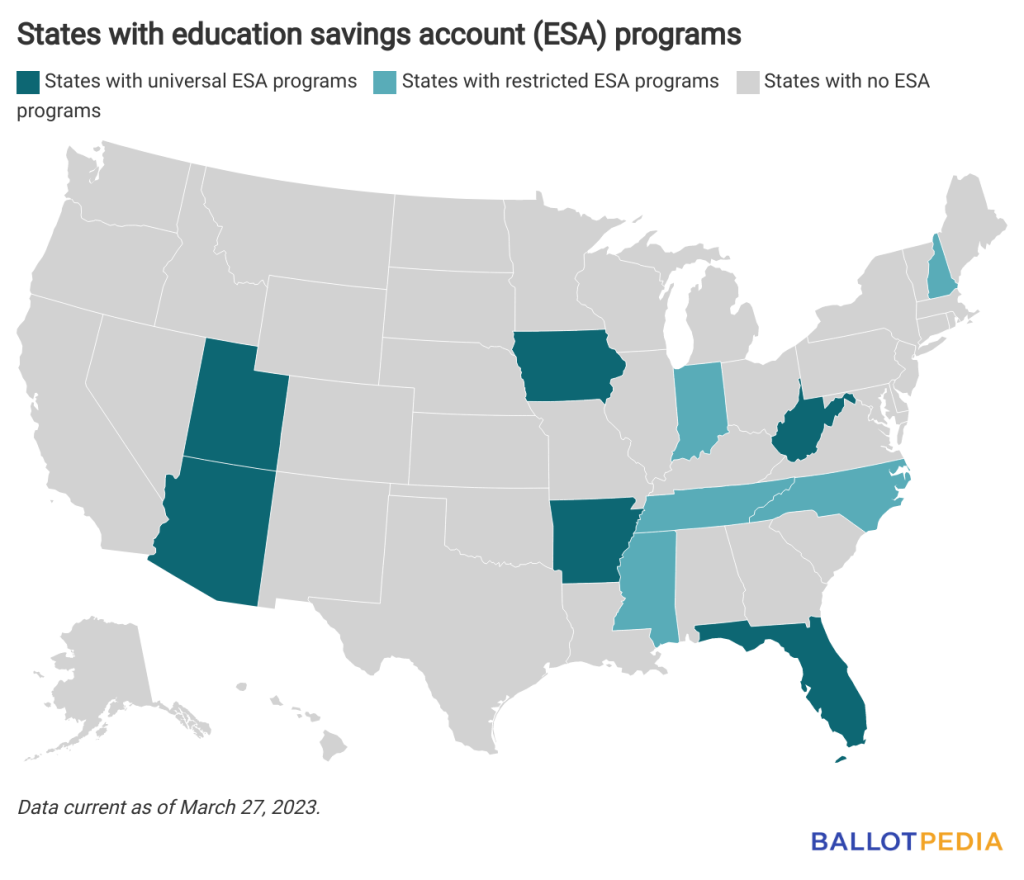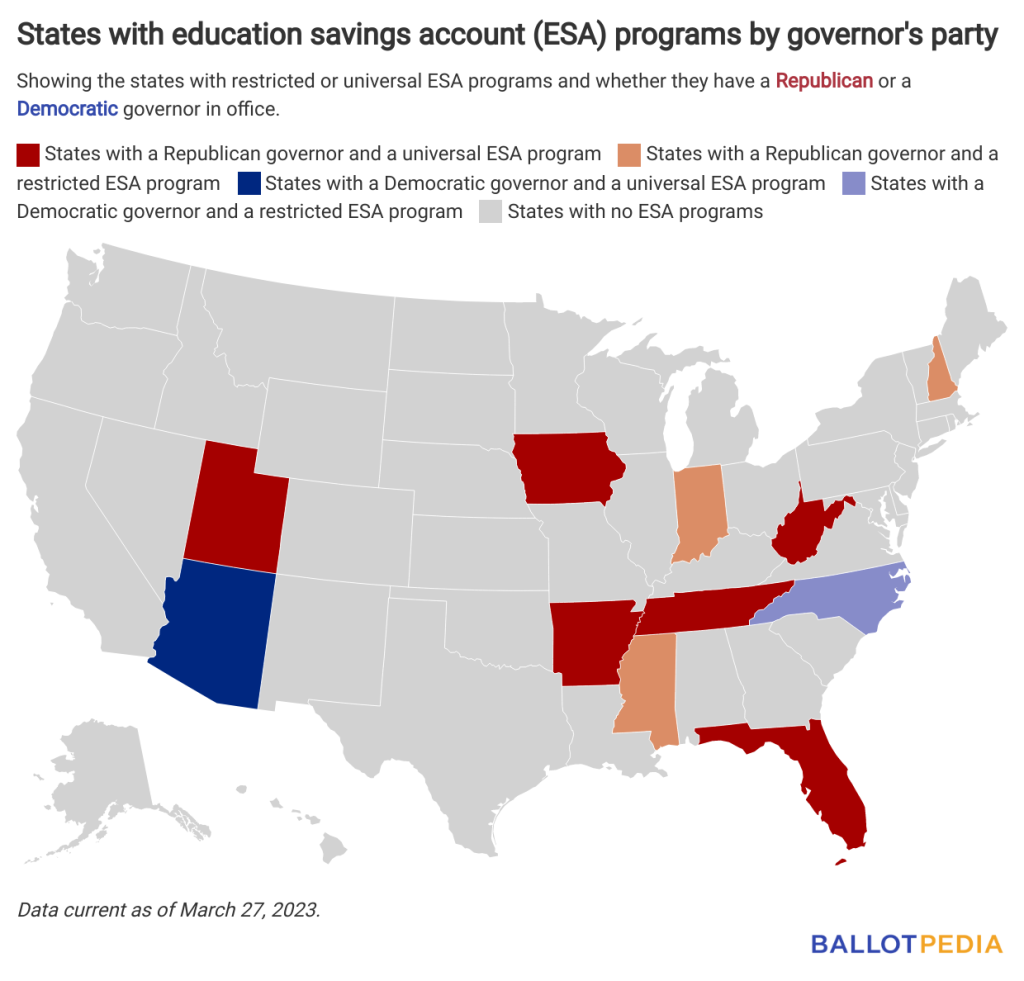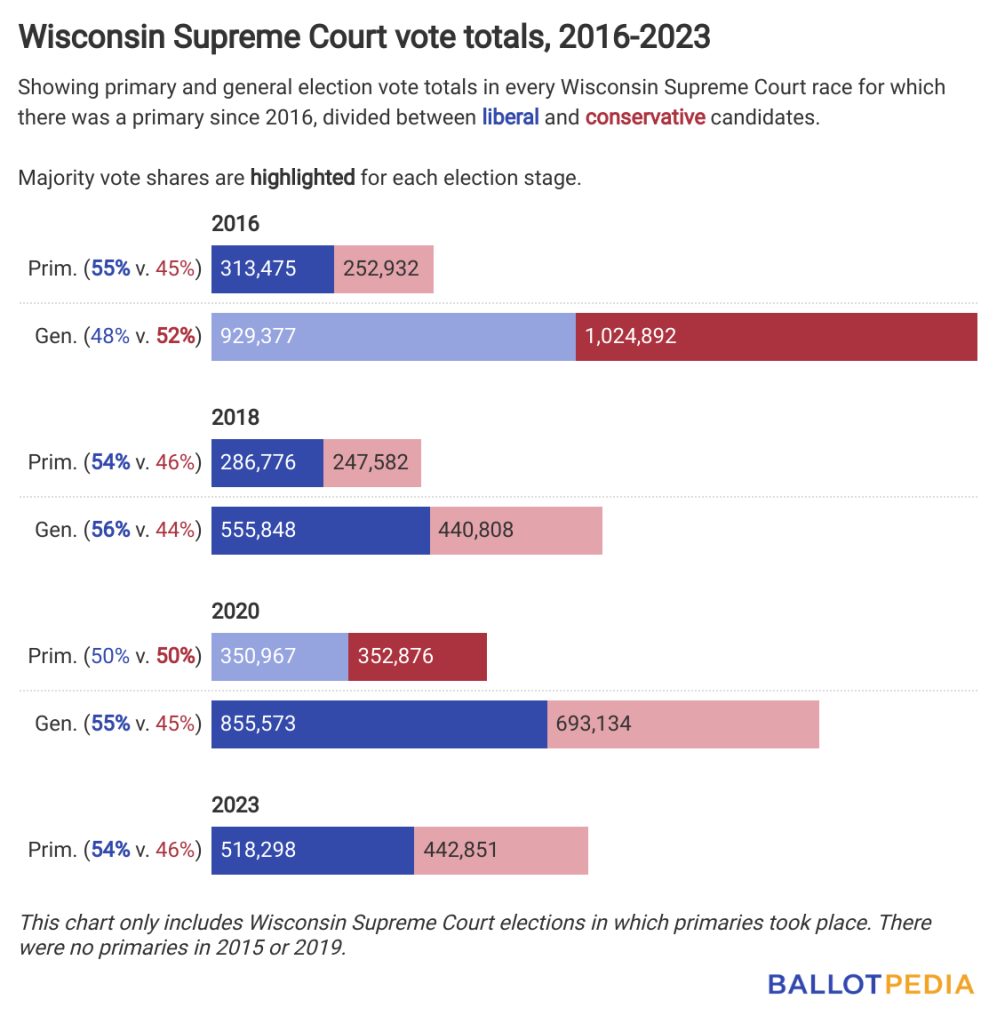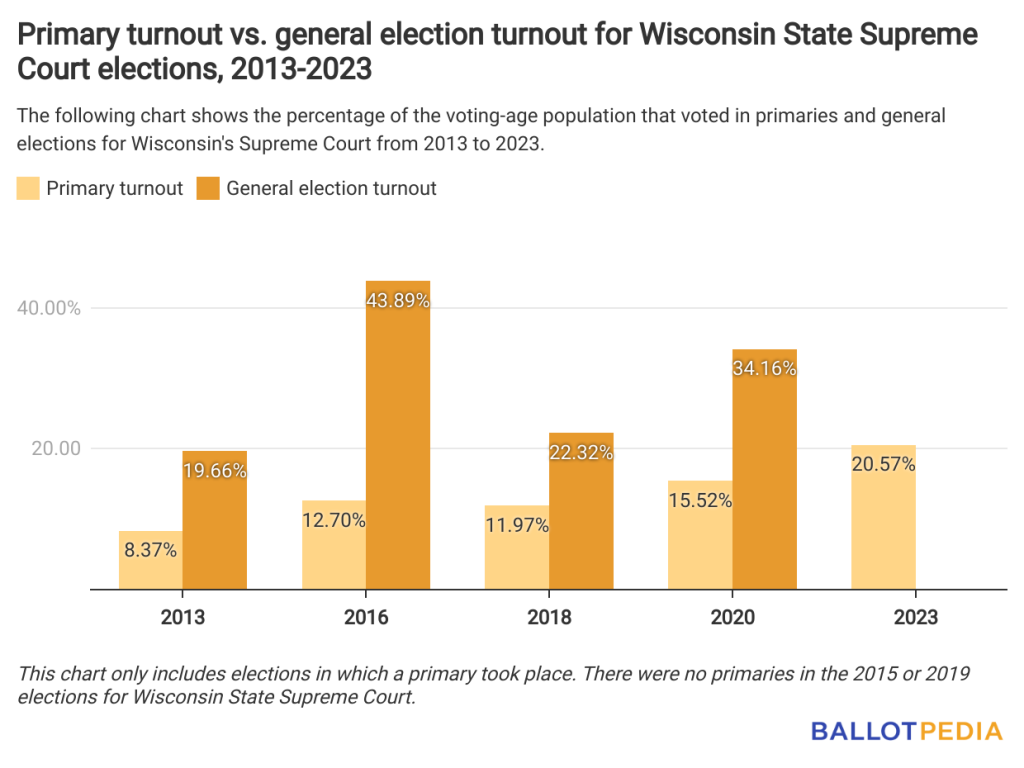Welcome to the Thursday, March 30, Brew.
Here’s what’s in store for you as you start your day:
- Florida expands education savings account (ESA) program
- What to expect in Tuesday’s Wisconsin Supreme Court election
- Listen to our interview with Transparency USA’s Tracy Marshall for On the Ballot, our weekly podcast
Florida expands education savings account (ESA) program
On March 27, Florida Gov. Ron DeSantis (R) signed a measure that expands the state’s Family Empowerment Scholarship program. The expanded program will provide K-12 students with around $7,500 for educational expenses outside of the public school system, including private school tuition, tutoring, and homeschooling expenses.
The Family Empowerment Scholarship was created in 2014 and provides eligible students—such as those with disabilities or from low-income families—with funding to defray private school tuition or tutoring costs.
The expanded program focuses on students from low-income families and will allow all K-12 students to apply, provided they do not attend public schools.
Florida is the fourth state in 2023 to expand its existing ESA program to cover all students. Utah, Iowa, and Arkansas did so as well. Arizona and West Virginia expanded their ESA programs to all students in 2022.
Five other states—Indiana, Mississippi, New Hampshire, Tennessee, and North Carolina—restrict eligibility to their Education Savings Account programs.

Six states with universal ESA programs have Republican governors, while one—Arizona—has a Democratic governor. Of the states that restrict eligibility to their ESA programs, three have Republican governors, while one—North Carolina—has a Democratic one.

Other states have more limited programs that allow eligible students to attend private schools. According to Notre Dame law professor Nicole Stelle Garnett, “Thirty states, the District of Columbia, and Puerto Rico have one or more private-school-choice programs, which this year enable more than 700,000 children to attend a private school.”
Florida’s new law also eases requirements for some types of teaching certificates. DeSantis said, “parents are going to be able to have the ability to get money for their student for their child, and they can do tuition, they’re also going to be able to use it for things like tutoring and other things that can be very important for a child’s development and well being.”
The House passed the legislation 83-27 on March 17, with 79 Republicans and four Democrats voting in favor. No Republicans opposed the bill, while nine representatives did not vote. Republicans have an 84-35 majority in the House.
The Senate passed the bill 26-12 along partisan lines (two Republicans were absent) on March 23. Republicans hold a 28-12 majority in the Senate.
Critics said the law will redirect funding from public schools and benefit wealthier households, who may already send their children to private schools. Florida Education Association President Andrew Spar said, “The universal voucher bill signed today by Gov. DeSantis will drain billions of taxpayer dollars away from the neighborhood public schools that nearly 90 percent of Florida’s parents trust to educate their children.”
State Sen. Corey Simon (R), who sponsored the bill in the Senate, said, “This legislation is a transformational opportunity to make it clear that the money follows the child, and parents have a right to guide their child’s education as they see fit.”
Florida’s new law takes effect July 1.
Don’t miss out on more important education news—sign up for our Hall Pass newsletter! Stay informed about school board politics, education policy, insightful commentary, and crucial research from across the political spectrum. Subscribe to Hall Pass now and join the conversation shaping the future of education.
What to expect in Tuesday’s Wisconsin Supreme Court election
We’ve written a lot in the Brew about the upcoming Wisconsin Supreme Court race – catch up on our earlier writeups here, here, and here.
With the election less than one week away, let’s take a look at this year’s primary results and turnout.
A quick refresher – Wisconsin’s supreme court elections are officially nonpartisan, but justices and candidates are often considered to be liberal or conservative. The current court is considered to have a 4-3 conservative majority. With Justice Patience Roggensack—a member of the court’s conservative majority—retiring, the general election will determine ideological control of the court.
In the four-candidate primary in February, liberal candidate Janet Protasiewicz and conservative Daniel Kelly advanced to the general election after receiving 46.5% and 24.2% of the primary vote, respectively. Together, Protasiewicz and Everett Mitchell—the other liberal candidate in the race—received 53.9% of the vote, while Kelly and Jennifer Dorow—the other conservative—received a combined 46.1%.
Looking at the previous three state supreme court primaries, the combined share of the vote liberal and conservative candidates received in the primary indicated the general election’s outcome in 2018. That year, liberal candidates Rebecca Dallet and Tim Burns received a combined 53.7% of the primary vote, while conservative Michael Screnock received 46.5%. Dallet went on to defeat Screnock 55.7% to 44.2% in the general election.
The 2020 and 2016 primaries, however, did not indicate the general election results.
In 2020, Kelly, then an incumbent, received more than 50% of the vote in the primary, while the two liberal candidates—Jill Karofsky and Ed Fallone—received a combined vote total of 49.9%. Karofsky’s defeated Kelly 55% to 45% in the general election.
In 2016, liberal candidates JoAnn Kloppenburg and Joe Donald received a combined total of 55% of the vote in the primary, while conservative Rebecca Bradley received 45%. Bradley defeated Kloppenburg 52% to 47% in the general.

Turnout in state supreme court primaries in Wisconsin has been increasing in recent years, and the Feb. 21 primary was no exception. Nearly 21% of the voting-age population voted in this year’s primary, the highest turnout in a decade.
In 2020, 16% of the voting-age population voted in the primary, while in 2018, nearly 12% of the voting-age population did. In 2016, less than 13% of the voting-age population voted in the primary, and in 2013, only around 8% did. There were no primaries in 2015 or 2019.
Primary turnout can be a useful indicator of voter interest in a race, but it does not necessarily predict turnout in the general election. Turnout in the 2016 primary, for example, was lower than in the 2020 primary and less than 1% higher than in 2018. Still, turnout in the 2016 general election was a record-breaking 44% of the voting-age population, considerably higher than the 34% turnout in the 2020 general election, and almost twice the 22.3% turnout in 2018.

The presence of other races on the ballot can affect turnout and vote share in the general election compared to the primary. The 2016 Supreme Court general election coincided with competitive presidential primaries for both the Republican and Democratic parties, for example, likely increasing turnout in the general election vs. the primary. The 2020 general election coincided with the competitive 2020 Democratic presidential primary, but there was no competitive Republican primary that year. Turnout for the liberal candidate increased more than turnout for the conservative candidate in the general election that year.
There are no presidential primaries in 2023, but the general election ballot will include three ballot questions, including a state constitutional amendment that would increase the discretion judges have to impose cash bail on people accused of violent crimes. According to NBC’s Sam Edelman, the presence of that amendment on the ballot could affect the turnout for the supreme court election.
Wisconsin has a divided government. The governor is Democrat Tony Evers, while the Republican Party controls both chambers of the state legislature.
Wisconsin, along with Pennsylvania, is one of two states holding elections for state supreme court in 2023.
Listen to our interview with Transparency USA’s Tracy Marshall for On the Ballot, our weekly podcast
On the Ballot, our weekly podcast, takes a closer look at the week’s top political stories.
In this week’s episode, Ballotpedia’s Editor-in-Chief Geoff Pallay steps in for regular host Victoria Rose to interview Tracy Marshall, the founder and executive director of Transparency USA. Geoff and Tracy talk about the origins of Transparency USA, the complicated endeavor of capturing campaign finance information quickly, and other interesting stories and tales from millions of data points about state-level campaign finance information.
Episodes of On the Ballot come out Thursday afternoons, so if you’re reading this on the morning of March 30, you’ve still got time to subscribe to On the Ballot on your favorite podcast app before this week’s episode comes out!
Click below to listen to older episodes and find links to where you can subscribe.

